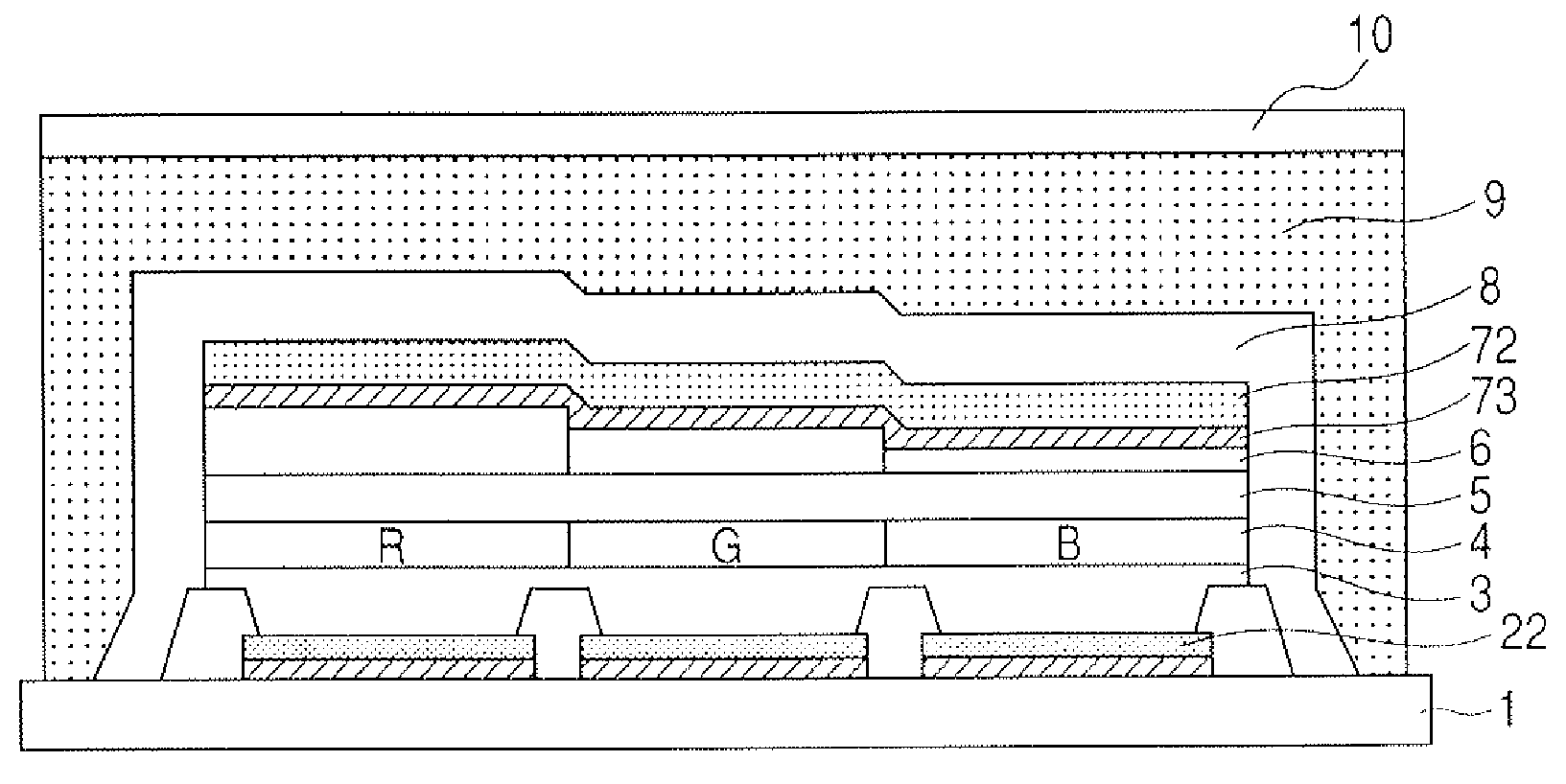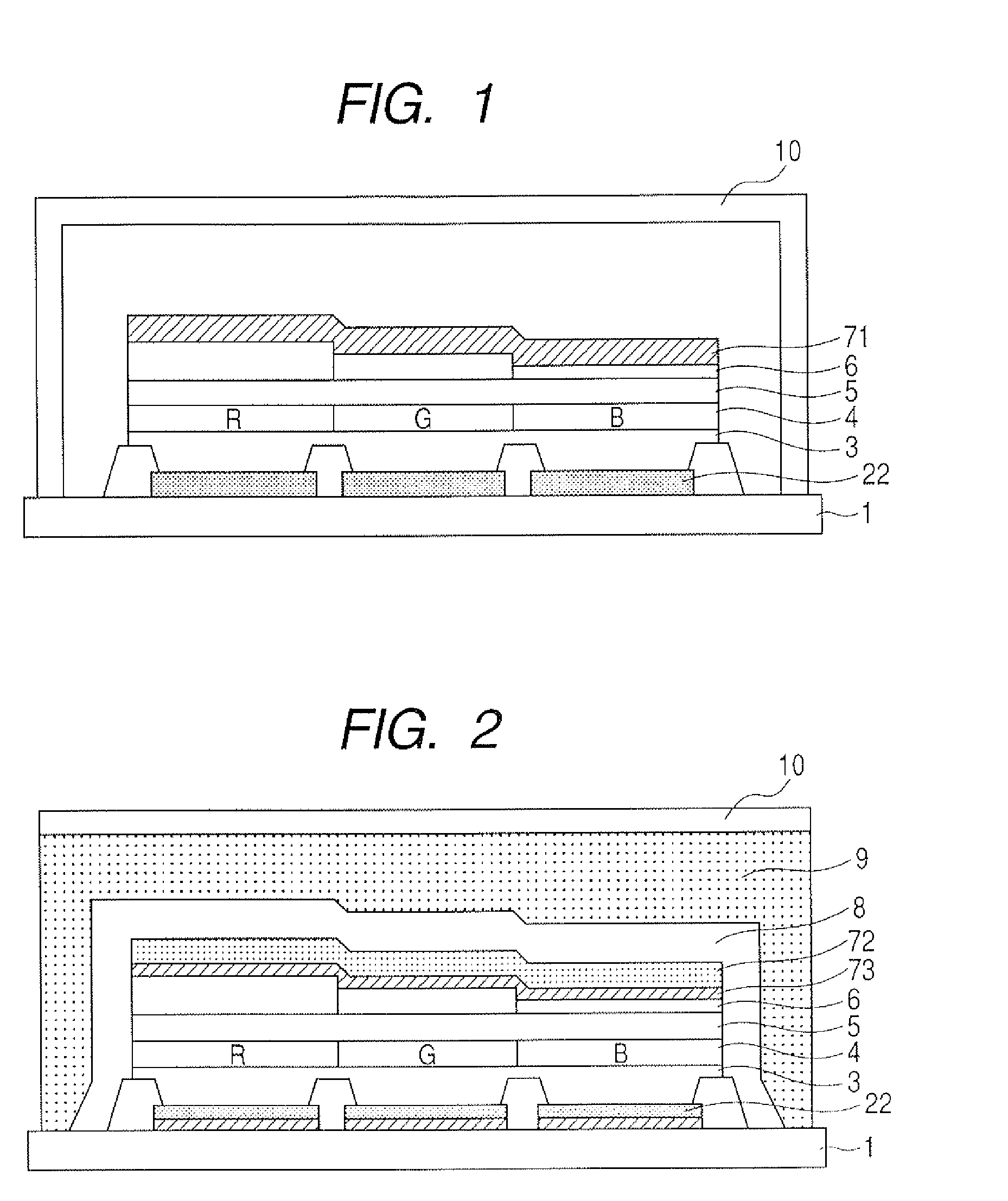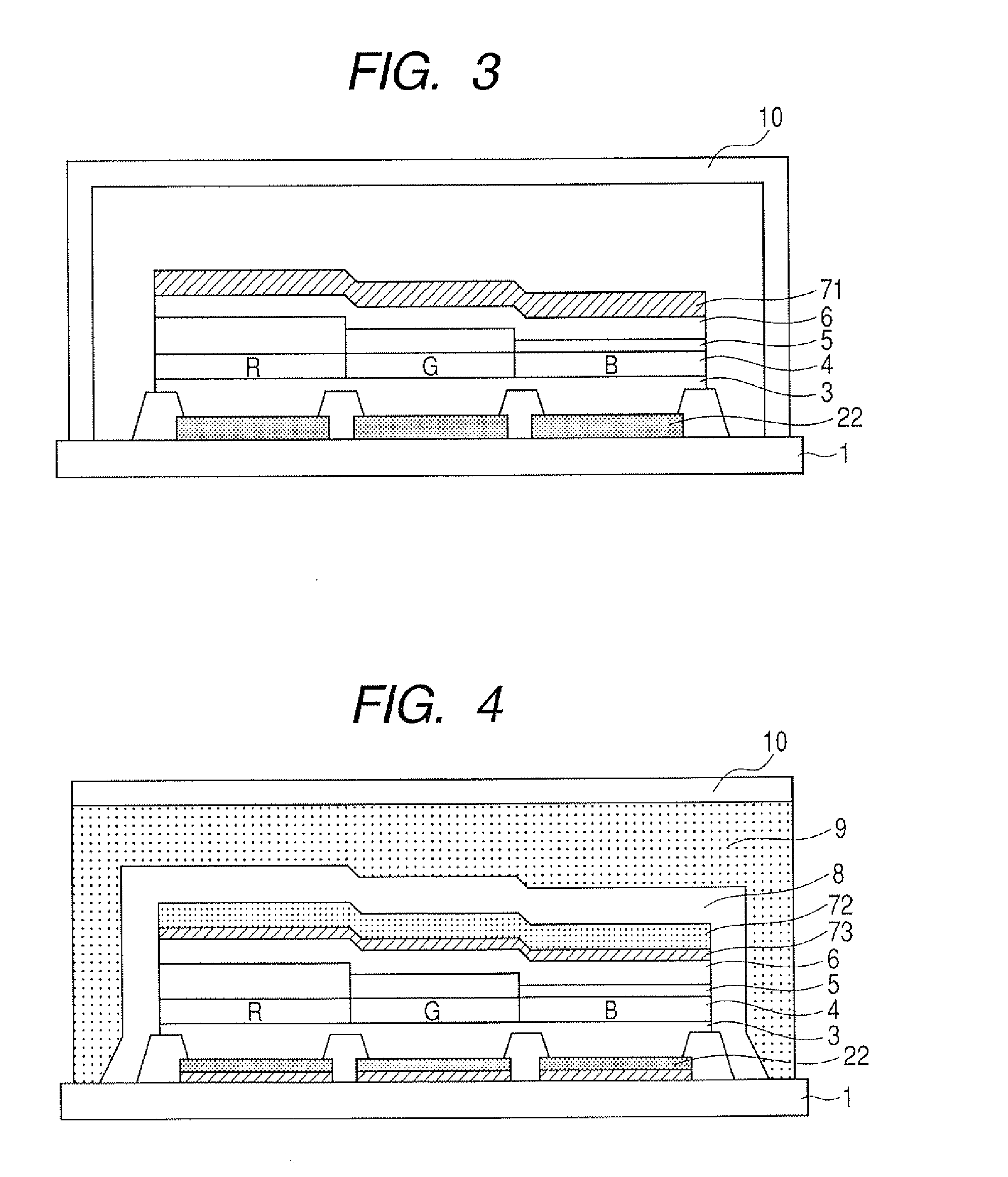Organic light-emitting device
a light-emitting device and organic technology, applied in the direction of organic semiconductor devices, discharge tubes/lamp details, discharge tubes luminescnet screens, etc., can solve the problems of reduced electron injection efficiency, increased voltage at which a light-emitting element is driven, and difficult to improve light extraction efficiency by controlling the thickness of the electron injection layer, etc., to achieve the reduction of emission efficiency, the effect of increasing the driving voltage of the element and improving the light extraction efficiency of organic light-emi
- Summary
- Abstract
- Description
- Claims
- Application Information
AI Technical Summary
Benefits of technology
Problems solved by technology
Method used
Image
Examples
example 1
[0043]An organic light-emitting device having a structure shown in FIG. 1 and including organic light-emitting elements for emitting three color lights of red (R), green (G) and blue (B) are produced by the following method. The chemical formulae of organic compounds to be used are shown below in this example, and Table 1 shows the thicknesses of respective layers and electrodes in red, green and blue light-emitting elements which are abbreviated as “Red”, “Green” and “Blue” in Tables 1 to 10.
TABLE 1RedGreenBlueCathode150 nm(A1)Electron injection30 nm20 nm10 nmlayerElectron transport 10 nmlayerLight-emitting30 nm30 nm30 nmlayerHole transport 40 nmlayerAnode120 nm(ITO)
[0044]The light-emitting device according to this example is the so-called bottom emission type light-emitting device in which light is extracted from the side of the transparent anode 22 as an electrode on the side of the substrate 1. Then, the light-emitting device improves light extraction efficiency by adjusting an ...
example 2
[0061]An organic light-emitting device having a structure shown in FIG. 2 and capable of emitting three lights of R, G and B is produced by the following method. Table 6 shows the thickness of the respective layers and electrodes in R, G and B light-emitting elements.
TABLE 6RedGreenBluePV film1200 nm Cathode (IZO)60 nmSemi-transparent cathode15 nm(Ag)Electron injection layer40 nm30 nm20 nmElectron transport layer10 nmLight-emitting layer40 nm30 nm30 nmHole transport layer20 nmTransparent cathode (IZO)20 nmReflective anode (AgAuSn)100 nm
[0062]The light-emitting device according to this example is the so-called top emission type light-emitting device in which light is extracted from the side of the semi-transparent cathode 73 as an electrode on a side opposite to the substrate side. Then, the light extraction efficiency of the light-emitting device is improved by adjusting an optical distance between an interface of semi-transparent 73 and the electron injection layer 6 and an interf...
PUM
 Login to View More
Login to View More Abstract
Description
Claims
Application Information
 Login to View More
Login to View More - R&D
- Intellectual Property
- Life Sciences
- Materials
- Tech Scout
- Unparalleled Data Quality
- Higher Quality Content
- 60% Fewer Hallucinations
Browse by: Latest US Patents, China's latest patents, Technical Efficacy Thesaurus, Application Domain, Technology Topic, Popular Technical Reports.
© 2025 PatSnap. All rights reserved.Legal|Privacy policy|Modern Slavery Act Transparency Statement|Sitemap|About US| Contact US: help@patsnap.com



